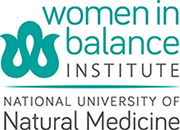 A day or two before her period begins, she can feel it coming on. It starts as a dull ache, a sensation in the back of her neck. Over the course of a couple hours, it worsens to an intense throbbing in her head. With the growing pain, her abdomen begins to complain and nausea sweeps over her. She withdraws from her family, seeking respite from the pain in a quiet, dark room. She may even need to rely on prescription pain medication to meet the daily demands of life during this time. This is a far too common story for women of all walks of life – the menstrual migraine.
A day or two before her period begins, she can feel it coming on. It starts as a dull ache, a sensation in the back of her neck. Over the course of a couple hours, it worsens to an intense throbbing in her head. With the growing pain, her abdomen begins to complain and nausea sweeps over her. She withdraws from her family, seeking respite from the pain in a quiet, dark room. She may even need to rely on prescription pain medication to meet the daily demands of life during this time. This is a far too common story for women of all walks of life – the menstrual migraine.
As many as 40% of women may experience the menstrual migraine at some point in their reproductive lives.[1] Menstrual migraines increase in incidence after puberty and likewise falls precipitously once women reach menopause. These headaches are similar in nature to the classic migraine picture – throbbing headache that may be one-sided or two-sided, nausea, sensitivity to light and sound – but is generally triggered by changes in hormonal balance close to the onset of menses.
As the start of the period approaches, a woman’s estrogen and progesterone level sharply decline. ( see menstrual cycle chart below) This shift in hormone levels can be associated with headaches and many other premenstrual symptoms.
While researchers are still exploring the exact pathomechanism by which lowered hormone levels influence menstrual migraines, we do know that lower estrogen and progesterone triggers a lowering of serotonin in the brain. The body responds to decreases in circulating serotonin by releasing neuropeptides that both cause your cranial blood vessels to dilate as well as sensitize the nerves that experience pain.[1] Interestingly, this hormone/neurotransmitter relationship may also be a contributing factor to the mood changes common to women in the time around their period.
Below are a few suggestions for things you can do today to help prevent menstrual migraines in the future.
Get with a doc
Seek out personalized treatment recommendations from a licensed naturopathic physician (N.D.), Nurse Practitioner or holistically minded medical doctor (M.D.) These healthcare professionals can help you identify and eliminate your particular triggers, balance your hormones, provide personalized specialty treatments as well as prescribe medications that may be helpful in stopping a migraine once in progress.
Eliminate Common Triggers
These include: wheat, cow’s milk, caffeine, alcohol (especially beer and red wine), aged cheeses, chocolate, aspartame, and MSG (monosodium glutamate – a common additive used in processed foods to make them taste more savory). In addition, dysregulation of blood glucose from skipping meals may also be a trigger for some women.
Magnesium
Research has shown that women who suffer from migraines tend to be more magnesium deficient than women who do not.[2] Multiple studies have shown the efficacy of magnesium preventing headaches in migraine sufferers.[3] Recommended doses are between 100-300mg twice daily. You may also ask your health care provider whether you are a good candidate for IV magnesium therapy.
Butterbur (Petasites hybridus)
Better known by its common name, Butterbur, this powerful herb can help stabilize the vessel walls that spasm during a migraine. When taken daily, butterbur can decrease both the frequency and severity of menstrual headaches and evidence strongly favors the use of this herb in the prophylaxis of migraine headache.[4] For optimal therapeutic effect, find a product that is standardized to 15% petasin (the most active component of butterbur) and dose 50-75mg twice daily.
Check out the Women In Balance webpage on headaches for more recommendations: https://womeninbalance.org/symptoms-solutions/headaches-migraines/
By Malea MacOdrum NCNM Naturopathic Medicine Program and Classical Chinese Medicine Program Edited by Dr Elise Schroeder
[sws_divider_line]
[1] Calhoun AH. Estrogen-associated migraine. Basow, DS (Ed), UpToDate, Waltham, MA, 2013.
[2] Barbiroli B, Lodi R, Cortelli P, et al. Low brain free magnesium in migraine and cluster headache: an interictal study by the in vivo phosphorus magnetic resonance spectroscopy on 86 patients. Cephalalgia 1997;17:254.
[3] Gaby AR. Migraine. In: Nutritional Medicine. Concord, NH: Fritz Perlberg Publishing; 2011.
[4] Holland S, et al. Evidence-based guideline update: NSAIDs and other complementary treatments for episodic migraine prevention in adults: Report of the Quality Standards Subcommittee of the American Academy of Neurology and the American Headache Society. Neurology. 2012 Apr 24;78(17):1346-53.


